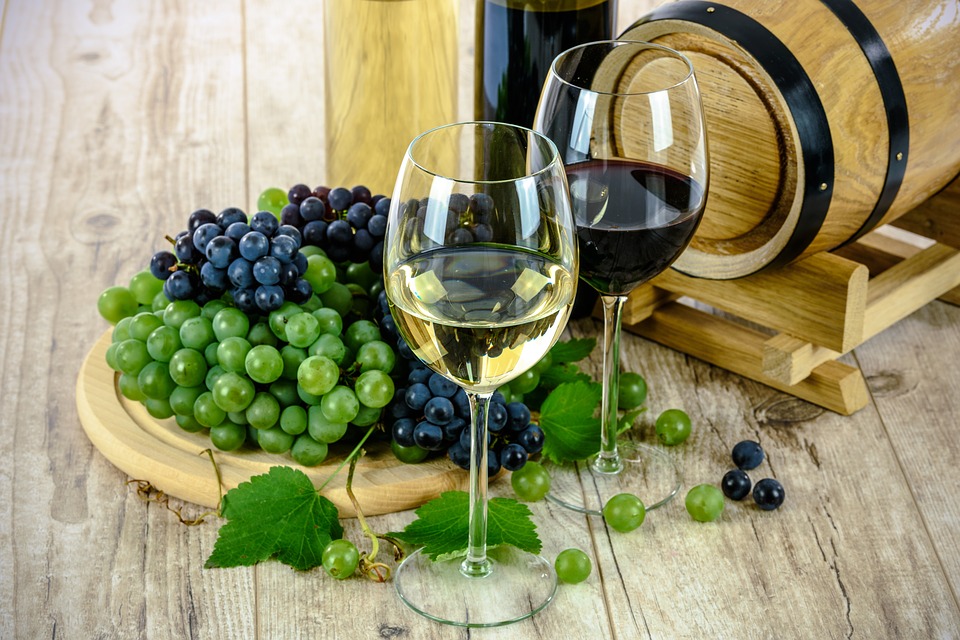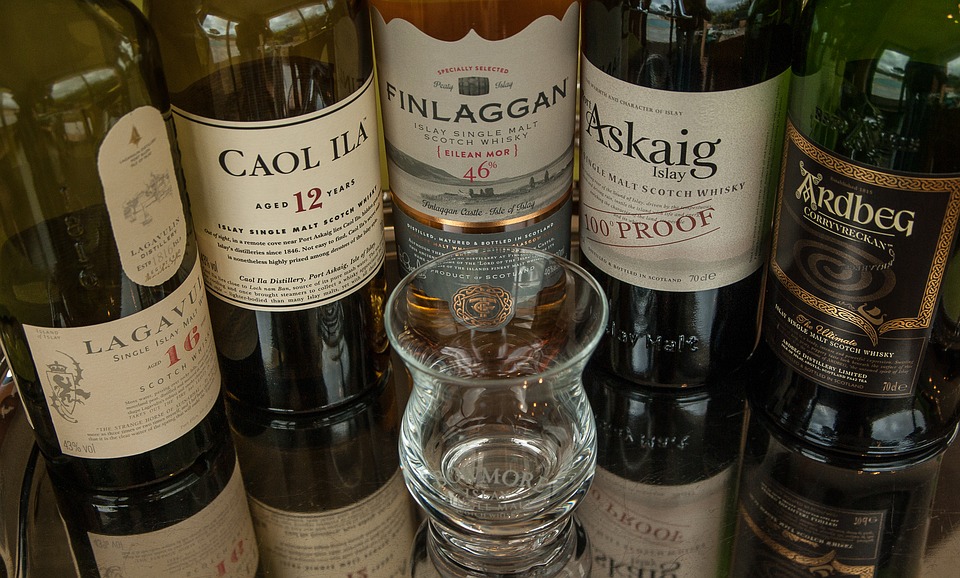Wine, beer and spirits have an amazing capacity to pair with all kinds of food. We’ve made some pretty interesting pierogies that match nicely with many trending beverages. We can design a pierogi that pleasantly echoes a wine or beer’s spiciness or perhaps a contrasting design for a ying-yang taste experience. We can also design a pierogi that can enhance the character of spirits, and vice versa. Let's team up and design a new style of pierogi that is worthy of pairing with your amazing wine, beer or spirit
Give us a call and tell us what type of wine, beer or spirit your considering for a pierogi pairing. We'll get right work creating a number of flavour & texture options that we'll bring to you for sampling. We'll work with you to fine tune the recipe until it’s a perfect complement to your beverage.
Once you've chosen your unique pierogi design, we take care of all the logistics of placing PierogiWorx in your storefront. That's when the magic happens. Having PierogiWorx as part of your retail component not only adds to the experience of enjoying your beverage, but it will also drive increased repeat business.
Beer Pairing

The Basics
At its core, beer pairing is a very practical skill. Well-carbonated beers—like a German pilsner—are naturally refreshing when served with rich food. Likewise, a crisp IPA can cut through the heat when you’re tackling spicy cuisine.
All in all, it helps to remember that light beers go with lighter dishes (pilsner with seafood), and heavy beers go with heavy dishes (stout with beef stew). Here are a few pairing suggestions for the most commonly-found beer types:
- India Pale Ale: A sweet, citrusy beer with an abundance of bitter hops. Pairs best with spicy foods like curry and kimchi, or rich, sweet desserts like crème brulee and carrot cake.
- Amber Ale: A milder ale that still retains its hoppy flavor and caramel top notes. Goes well with smoky, moderately spicy foods like barbecue, smoked bacon, jerk chicken, and chili.
- Belgian Ale (Dubbel, Trippel, Quad): Rich, spicy beers with varying levels of bitterness, and a subtle fruit aroma. Much like amber ale, these pair well with barbecue, meat stews, and any smoked foods.
- Pilsner: A hoppy, bitter beer with a light body and a refreshing finish. Complements fatty fish like salmon and tuna, along with lighter meats like chicken and sausage.
- Lager: The quintessential beer. Light, crisp, and supremely refreshing. If you’re in the mood for beer, it pairs well with anything, though it goes best with garlic-heavy foods (Italian, Spanish), as well as Mexican and South Asian cuisine.
- Kolsch/Cream Ale/Blonde Ale: Smooth, malty beers that balance sweetness and bitterness. Complement foods that blend sweet and spicy flavors, like Thai cuisine, mango salad, and a wide range of sausages.
- Bock: A richer, sweeter lager with warm toasty undertones and minimal bitterness. Pairs well with any spicy food, along with sharp, bitter flavors like white cheddar cheese.
- Wheat Beer/Hefeweizen: Light, unfiltered beers with undertones of banana and clove, and almost no bitterness. Pair well with lighter foods like salads, sushi, wiesswurst, and anything consumed on a porch.
- Porter: A hearty beer with a strong nutty flavor and undertones of toffee. Goes well with anything smoked or roasted—chicken, burgers, bacon—along with chocolate-flavored desserts.
- Stout: A dark, bitter beer with strong notes of chocolate and coffee. Goes well with rich, savory foods like stew and stroganoff. The more coffee-like varieties are great with ice cream.
- Barley Wine: A dark, hoppy beer with low carbonation and a sky-high ABV. Truly unique. While its flavor will overpower most complex dishes, it makes an excellent counterpart to strong cheeses and chocolatey desserts.
Helpful links:
Wine Pairing

The Basics
The wine chosen for a pairing should be more acidic or sweeter than the food but have the same intensity. White wines go well paired with lighter meats (white meats or fish) while red wines are best with red meats. To match a wine with a dish, its better to match the wine with the sauce used in the dish.
Here are some pairing suggestions for different wine types:
- Bordeaux: A red wine with flavors of black currants and cedar also perhaps with a touch of earth or leather. Pairs well with red meat, game, lamb and strong cheeses.
- Barbera: A medium-bodied red wine. Pairs best with lean or acidic dishes, meats and tomato.
- Shiraz: Big red wine with a fresh and fruit-forward taste. This wine pairs best with stew, beef steak, venison.
- Savignon Blanc: A light flavored and crisp white wine. This white wine goes well with lightly flavored foods, chicken, oysters, salad, asparagus.
- Chardonnay: A rich white wine. This goes well with rich dishes with butter or cream sauces, white meat and flavorful fish.
- Riesling: A light and fruity wine. Pairs well with apples, chicken, curry, duck, salad and seafood (light dishes).
- Merlot: A wine of black cherry or plum flavors. Goes best with full flavored cheese, chicken, duck, pork, steak and veal.
Helpful Links:
- http://www.winebc.com/wines/food-pairing
- http://www.foodandwinepairing.org/food_pairing_board.html
- http://www.winetomatch.com/
Spirit Pairing

Many cultures have a tradition of drinking spirits with food. The Greeks and Turks down anise-scented ouzo with an array of olives, salty cheese, dolmas, cured tuna, hummus and more. The Russians drink shots of icy vodka with caviar and zazuski spreads.
- Gin: The clear spirit infused with juniper and an intricate layering of botanicals plays well against the briny sweetness of a classic shrimp cocktail, chilled seafood platter or grilled prawns. Gin is made with myriad recipes, some juniper-heavy, some citrusy or herbal, some cask-aged.
- Aquavit: This Scandinavian clear grain spirit is flavored with caraway seed and, depending on the recipe, with spices such as cardamom, cumin, coriander, fennel or dill. Those flavors make icy shots of aquavit a natural with smoked salmon, gravlax and cured fish.
- Tequila: The agave-based spirit is drunk either straight up or in a cocktail. Shots of blanco (clear, unaged tequila) pair well with guacamole or queso fundido (melted cheese). A darker, more complexañejo (aged a minimum of a year) is brilliant with mole that has a touch of chocolate in it. A margarita straight up (no salt on the rim) is a better match with ceviche or tacos.
- Rum: A lighter golden rum with lime squeezed into it cuts right through the salt and fat of roast pork and suckling pig. A mojito made with Brazil's cachaça does the trick too.
- Whiskey: Made in an incredible array of styles, whiskey can step into Cabernet Sauvignon's shoes as an accompaniment to steak. The beef should be marbled and well-aged, the whiskey smooth and smoky. And taken neat.
- Vodka: The Russians know what to do: Serve the pure spirit icy cold, with caviar, smoked fish, herring. To give the neutral spirit a kick, it is often infused with all sorts of flavors. Horseradish or black pepper work with food, but most of the other flavored vodkas, no.
- Bourbon: America's whiskey, dark and profound, can hold its own against barbecued meats. Have that big slab of smoky baby-back ribs or smoked brisket with a glass of small-batch bourbon or a well-made Manhattan. Also, straight sipping bourbon from a top producer is very agreeable with chocolate, preferably something that's 70% cacao or more.
Helpful Links: